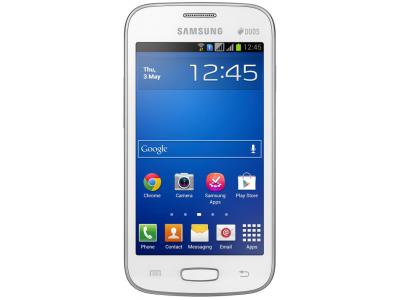Flash firmware on Samsung Galaxy Star 2
Mobiles >> Samsung >> Samsung Galaxy Star 2| Specifications | Reviews | Secret codes |
| Unlock phone | Root phone | Bypass FRP |
| Backup | Flash Firmware | Screenshot |
| Hard Reset |
How to flash Samsung Galaxy Star 2?
Why reinstall the firmware?
Errors constantly appear in the Android OS.
Some applications stop opening.
Some programs from the Play Market do not start.
The phone turns off for no apparent reason.
The phone started to work slowly.
You are not satisfied with the possibilities of the stock firmware.
Where can I find the firmware?
On the official website of the manufacturer.
On sites where third-party developers and phone manufacturers post custom or official OS.
What should be done before installing the firmware?
Back up your contacts and user data and transfer it to your computer.
Insert SD card. An SD card is needed to write firmware to it.
Determine your smartphone model.
Fully charge your device's battery.
Find and download the archive with Firmware. Place it on the SD card.
Installing TWRP Recovery
Download the Official TWRP App to your phone from the Play Market. And install this app.
When you start the application for the first time, you must agree to install the firmware, as well as agree to grant the application Superuser rights and click the 'OK' button.
In the next screen, select the item 'TWRP FLASH' and provide the application with root-rights.

On the main screen of the application, click 'Select Device', and select your phone model.
After selecting the phone, the application will redirect the user to a web page to download the modified recovery environment image file. Download the proposed *.img file.
After downloading the image file, go to the main screen of the Official TWRP App and press the 'Select a file to flash' button. Then we tell the program the path where the file loaded in the previous step is located.
Press the 'FLASH TO RECOVERY' button and confirm your choice, press 'OK'.
When the message 'Flash Completed Succsessfuly!' appears. Click 'OK'. The TWRP installation procedure is now complete.
Copy the firmware and other necessary files to the SD card.
Insert a SD memory card into the phone.
To reboot into recovery, you need to enter the menu accessible by pressing the button with three stripes in the upper left corner of the main screen of the application. Select 'Reboot' and then click on the 'REBOOT RECOVERY' button.
Firmware via TWRP

Before flashing, you need to delete all user data from the phone, this will avoid many problems. press 'WIPE' on the home screen.
You can start flashing. Click the 'Install' button.

The file selection screen is displayed. At the very top is the 'Storage' button, select the location where the firmware file is located.
Select the location where the files were copied. Press the OK button.

Find the file we need and click on it. A screen opens with a warning about possible negative consequences, you need to check the item 'Zip signature verification', which will avoid using corrupted files when writing to the phone's memory sections.
The procedure for flashing the phone will begin, accompanied by the appearance of inscriptions in the log field and the movement of the progress bar.
After the firmware installation procedure is completed, the 'Successful' message appears on the screen.
Summary: OS: Android (4.4); Dimensions: 4.32 x 2.36 x 0.46 inches (109.8 x 59.9 x 11.8 mm); Weight: 3.80 oz (108 g)the average is 4.8 oz (137 g); Side Keys: Left: Volume control; Right: Lock/Unlock key; Colors: Black, White; Physical size: 3.5 inches; Resolution: 320 x 480 pixels; Pixel density: 165 ppi; Technology: TFT; Screen-to-body ratio: 55.46 %; Touchscreen: Capacitive, Multi-touch; Features: Proximity sensor; Camera: 2 megapixels; Camcorder: 640x480 (VGA) (24 fps); System chip: Spreadtrum SC6815; Processor: Single core, 1000 MHz, ARM Cortex-A7; Graphics processor: Mali 400; System memory: 512 MB RAM / LPDDR2; Built-in storage: 4 GB; Storage expansion: microSD, microSDHC up ...
Comments, questions and answers on the flash firmware Samsung Galaxy Star 2
Ask a question about Samsung Galaxy Star 2




